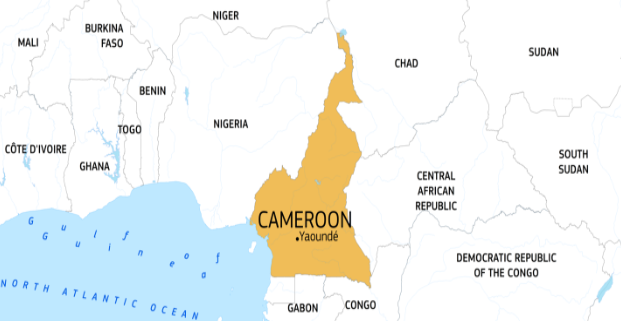ABOUT HOPE FOR CAMEROON
Hope for Cameroon (HfC) is an international apolitical non-profit organization registered in Montreal, Canada, and Douala, Cameroon, committed to empowering vulnerable internally displaced communities, with a focus on women and children who have been significantly affected by the ongoing armed conflict in Cameroon. Through our initiatives, we provide access to educational opportunities, community development and entrepreneurship training programs, and essential resources to foster positive change and sustainable development in our communities.
ABOUT CAMEROON

Cameroon is a country in Central Africa with a population of over 25 million. It is bounded on the East by Central Africa Republic, on the West by Nigeria, on the North by Chad, and on the South by Congo, Gabon, and Equatorial Guinea. It has a vast geographical and cultural diversity with over 240 different ethnic groups, which earns its name “Africa in miniature” or “All Africa in one country”. Cameroon has two major capital cities – Yaoundé (Political) and Douala (economic), and similar to Canada, it has two official languages, French and English.
Like many African nations, Cameroon has a long, intricate history that predates colonial involvement.
Pre-Colonial Era: Before colonial influence, Cameroon was inhabited by various indigenous groups, each with its own rich, unique traditions and cultures. The Sao civilization, around Lake Chad, is one of the earliest known cultures in Cameroon, dating back to around 500 AD.
Portuguese Arrival: In the late 15th century, Portuguese explorers reached the Cameroon coast, naming the region after the Rio dos Camarões (River of Prawns) due to the abundance of shrimp in the waters.
Colonial Rule: In the subsequent centuries, European powers vied for control of Cameroon. Following the Berlin Conference of 1884, Germany declared it a protectorate, naming it Kamerun. After World War I, the League of Nations divided Kamerun between France and Britain as mandate territories. The French administered the larger eastern part, while the British governed a smaller region along the Nigerian border.
Independence: On January 1, 1960, French Cameroon became independent, with Ahmadou Ahidjo as its first president. British-administered Northern Cameroons voted to join Nigeria, while Southern Cameroons merged with the newly independent French Cameroun to form the Federal Republic of Cameroon in 1961.
Current Challenges: Today, Cameroon grapples with a plethora of challenges, foremost among them being the protracted humanitarian crisis spanning more than six years in the minority English-speaking regions, all stemming from the Anglophone conflict.
Sources:
- Cameroon: Politics and Society in Critical Perspectives by Piet Konings and Francis B. Nyamnjoh
- A History of Cameroon by Victor Julius Ngoh
- The Cameroon Condition by George Ngwane
- Ardener, E. (1962). The Political History of Cameroon. The World Today, 18(8), 341–350. http://www.jstor.org/stable/40393427
- https://www.bbc.com/news/world-africa-13146029

